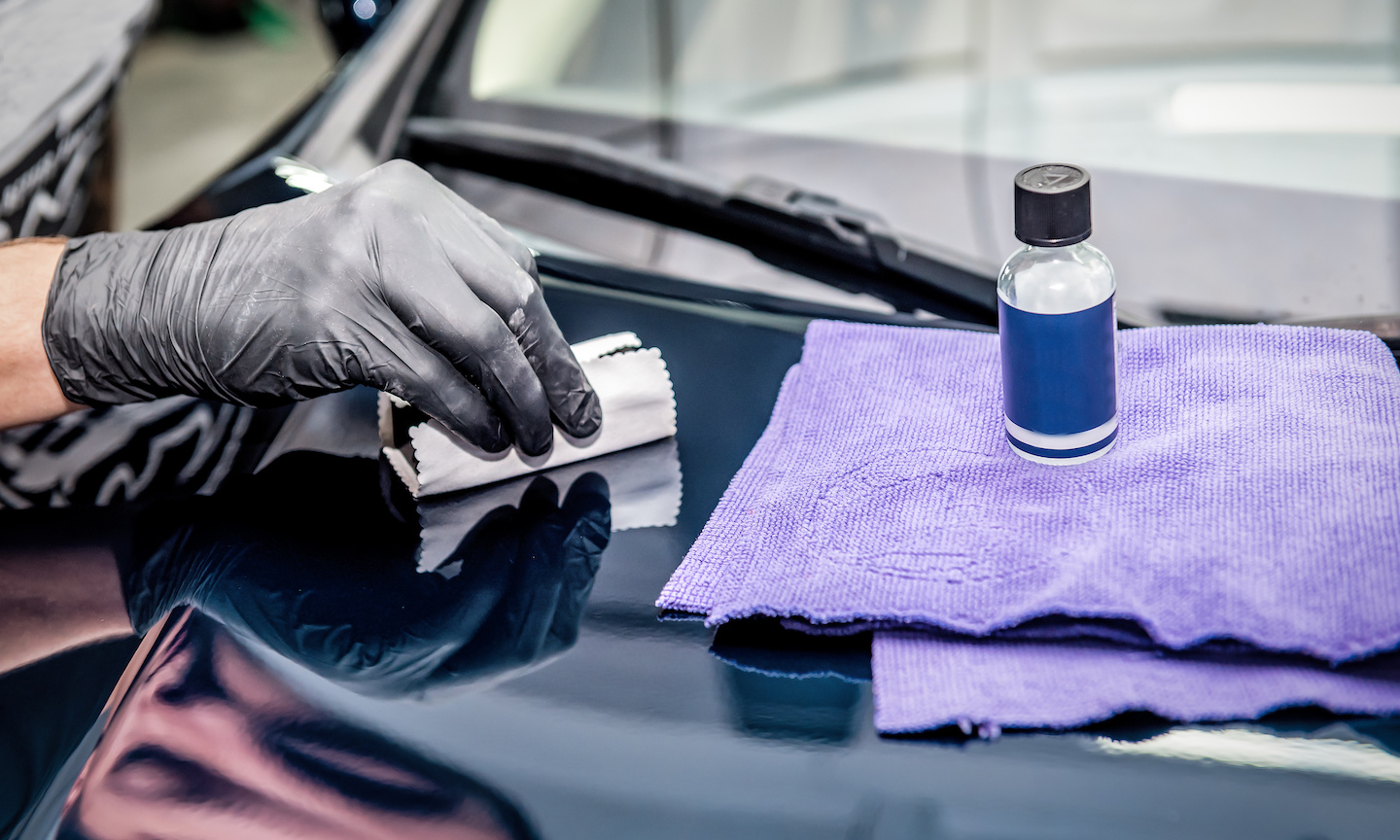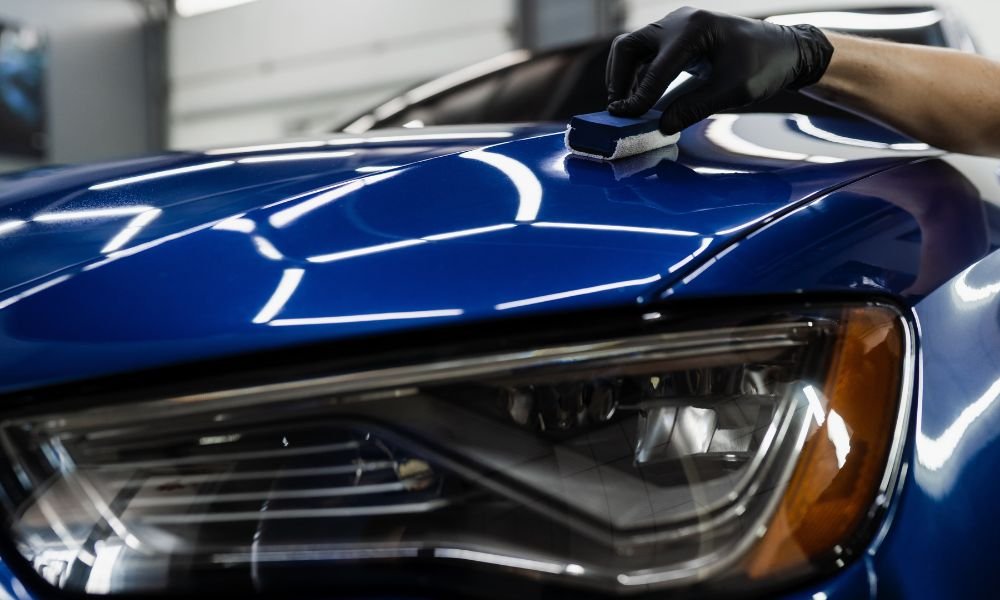Superior Auto Detailing at Conforti Auto and Marine Detailing Ceramic Coating
Superior Auto Detailing at Conforti Auto and Marine Detailing Ceramic Coating
Blog Article
How Explaining Ceramic Finish Enhances the Long Life of Your Car's Paint
Ceramic finishing has actually become an essential innovation in auto detailing, offering a durable solution for maintaining the stability of your car's paint. By developing a safety layer that effectively guards versus UV rays, chemical spots, and environmental pollutants, this ingenious covering not only enhances the aesthetic appeal of the car yet also adds to its total durability. Understanding the details of exactly how ceramic finish jobs and its benefits over typical wax can give beneficial insights for car owners. What aspects should you think about before making the financial investment?
What Is Ceramic Finishing?
Recognizing the protective advantages of ceramic finishing starts with acknowledging its structure and performance. Ceramic finish is a fluid polymer applied to the exterior surface areas of cars, mostly made to enhance and protect auto paint. The essential element of this layer is silicon dioxide (SiO2), which is acquired from natural materials like sand. This substance creates a strong chemical bond with the factory paint, producing a protective layer that is both resilient and hydrophobic.
The coating's application includes meticulous preparation of the car's surface, which should be devoid of impurities, scrapes, and blemishes to guarantee ideal attachment. When applied, the ceramic covering cures to form an inflexible guard that can withstand various environmental variables, including UV rays, chemical stains, and oxidation.
Additionally, ceramic coverings are not simply surface-level treatments; they permeate the paint to provide a lasting defense. This functionality prolongs the lifespan of the vehicle's aesthetics while preserving its value with time. Understanding these fundamental facets of ceramic covering is important for automobile proprietors seeking effective remedies for paint conservation and enhancement.
Advantages of Ceramic Coating
The benefits of ceramic covering expand much beyond its standard protective features. Unlike traditional wax or sealers, ceramic coatings create a solid bond with the auto's paint, allowing it to withstand ecological dangers such as UV rays, acid rain, and roadway salt.
Additionally, ceramic finishings provide hydrophobic residential or commercial properties, meaning they ward off water and pollutants. This particular not just makes the car much easier to tidy but likewise minimizes the regularity of washing, conserving both time and initiative for vehicle proprietors. The slick surface area created by the covering prevents dirt and grime from adhering, boosting the vehicle's overall tidiness.
Moreover, ceramic coverings boost the depth and clarity of the paint, providing automobiles a glossy surface that is visually striking. This aesthetic improvement additionally adds to preserving the auto's resale worth, as a well-kept exterior is a significant selling point for potential customers. In general, the benefits of ceramic finish make it a rewarding investment for anyone wanting to protect and boost their vehicle's paintwork.
Exactly How Ceramic Layer Works

The finish's hydrophobic residential or commercial properties ward off water and visit site dust, protecting against the buildup of crud externally. This not only makes the car simpler to tidy however also reduces the probability of scrapes and swirl marks created by traditional washing methods. The ceramic layer acts as a guard against UV rays, which can trigger fading and oxidation over time.
As soon as cured, the finish shows exceptional resistance to chemicals, consisting of road salts, bird droppings, and tree sap, which can otherwise damage the paint. The longevity of ceramic coverings can last for numerous years, depending upon variables such as maintenance and environmental conditions. In general, the chemical bonding procedure of ceramic layers supplies a robust protection that keeps the integrity and look of a vehicle's paintwork.
Comparing Ceramic Finishing to Wax
Comparing ceramic layer to conventional wax exposes significant distinctions in performance and longevity. While both items aim to shield a car's paint, their structures and sturdiness established them apart. Wax, generally made from natural carnauba or synthetic materials, provides a temporary shield that normally lasts just a couple of weeks to a couple of months, depending on environmental conditions and upkeep regimens.
On the other hand, ceramic coatings are advanced services composed of inorganic materials that bond chemically with the vehicle's paint. This develops a durable, semi-permanent layer of security that can sustain for several years. Consequently, ceramic finishings use exceptional resistance to UV rays, chemical discolorations, and physical abrasion, considerably minimizing the threat of oxidation and fading.
Additionally, the hydrophobic residential or commercial properties of ceramic finishings guarantee that water my link beads up and rolls off the surface area, making it harder for dirt and grime to adhere. This simplicity of cleansing is a significant benefit over wax, which can draw in dirt and call for constant reapplication. Ultimately, for car proprietors seeking long-lasting security and improved visual allure, ceramic layers present a much more reliable option to traditional wax products.
Maintenance Tips for Durability
Proper maintenance is vital for optimizing the durability of a ceramic finish. Routine cleansing is the foundation of efficient upkeep. Make use of a pH-balanced automobile hair shampoo to stop deteriorating the finish, and prevent automatic cars and truck cleans with extreme brushes that can cause micro-scratches. Rather, select a touchless automobile wash or hand laundry.
To keep the hydrophobic properties of the ceramic finishing, think about applying an upkeep spray or booster especially created for ceramic coverings every few months. This will certainly enhance the safety layer and boost water beading.
In addition, stay clear of exposing the covered surface area to severe ecological problems whenever feasible. Parking in shaded locations or utilizing a cars and truck cover can prevent UV damages and contamination from bird droppings, tree sap, or commercial fallout.
Lastly, evaluate the finish periodically for indications of wear or damages. If you notice a decrease in hydrophobic actions, it may be time for a professional reapplication. By sticking to these upkeep tips, vehicle owners can considerably expand the life and effectiveness of their ceramic layer, guaranteeing that their vehicle's paint continues to be secured and visually appealing for years ahead.
Conclusion

Report this page